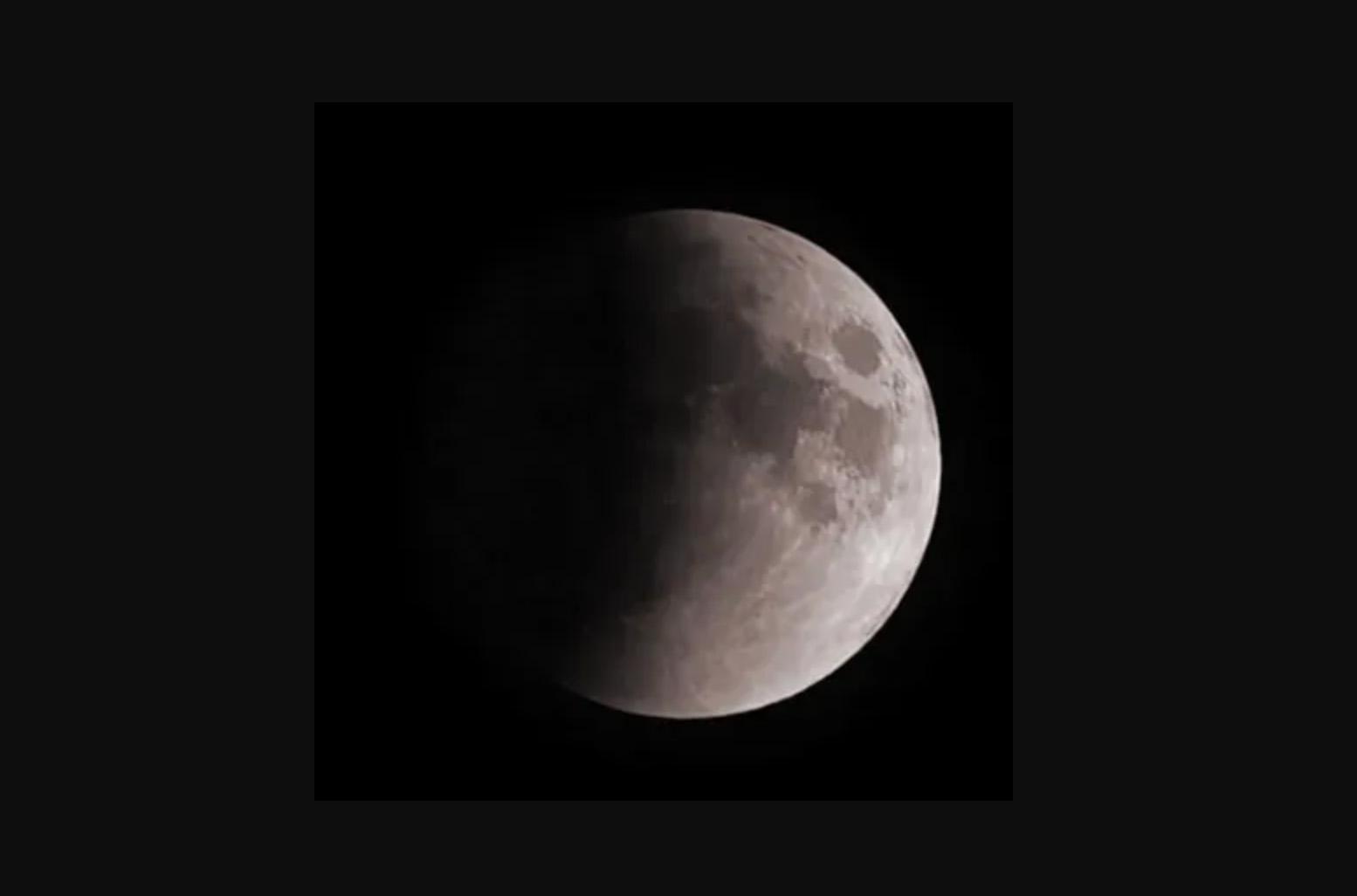Image of a partial lunar eclipse, courtesy of NASA.
The evening of Sept. 17 brings a partial lunar eclipse into the skies of SUNY Oswego -- and much of the world. While not as rare as the total solar eclipse that wowed the campus in April, any opportunity for such skygazing provides an opportunity for education and wonder.
If the skies are clear, observing from campus is possible, especially for those attending the partial lunar eclipse telescope session at the Rice Creek Field Station observatory from 9 p.m. to around midnight on Tuesday, Sept. 17.
Oswego Today reached out to Shashi Kanbur, a Distinguished Professor of Physics and Astronomy at SUNY Oswego and a world-renowned astrophysicist, to learn more about what to expect.
"The Earth comes in between the Sun and Moon and casts its shadow on the Moon," Kanbur explained. "Because the plane of the Moon's orbit around the Earth is tilted by about 5 degrees to the plane of the Earth's orbit around the Sun, they occur about one or two times a year."
These lunar eclipses are more common than solar eclipses, total or otherwise. "From any given location, a total solar eclipse is probably something like a once-in-a-century event," Kanbur noted. This eclipse will be visible to "most of North America, all of South America, western parts of Asia and Russia, parts of Antarctica."
A partial lunar eclipse does not completely cover the Moon, but still is a marvel. "In a partial lunar eclipse, the Earth still comes in between the Sun and Moon but the alignment is not right so only part of the Moon's disk is in Earth's shadow," Kanbur said.
Observing the eclipse
Nonetheless, if one wants to see the phenomenon where it appears the Earth's shadow is taking a bite out of the Moon, peak activity starts at 10:12 p.m. and ends at 11:15 p.m.
Visitors to the Rice Creek Observatory can gaze at the moon through a dedicated telescope and additional celestial objects through a second telescope, including:
- Saturn, Uranus, Neptune, and possibly their largest moons
- Later in the evening: Jupiter
- Double stars, nebulae, star clusters and galaxies
Coffee, tea and hot cocoa will also be available free of charge to attendees. This event's hosts are Kamal Jabbour, a visiting scholar at the Rice Creek Observatory, and John Zielinski, a retired SUNY Oswego astronomy faculty member.
Since clear weather is needed for best observing the night sky, those interested in visiting the observatory on Tuesday night should call 315-312-6620 after 6 p.m. on the evening of the event for a recorded message announcing whether or not the weather conditions will allow the session to take place.
Virtual viewing of this event is also possible through a live stream on the YouTube.com/@PompeyObservatory channel.
For more information on the Rice Creek Observatory, email rcfs@oswego.edu.




